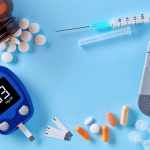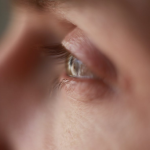Every home has a stock of medicines which includes medicines for the elders, for the kids and some general medicines like band-aids. But, have you ever faced a situation when you have not been able to find the peroxide when you needed it the most?
If yes, then you are not an exception, and you are on the right page.
This mostly happens because we stack all our medicines on one shelf and we don’t organize it the way we organize our files. However, it is necessary to have a handy and compartmentalized first-aid kit. Let’s create one for our house today.
- Look for an Old Good Container
A container is a 1st thing that you will need to create your first-aid kit. To start off with, use a small box, wrap it neatly, preferable with white color paper and label it with the “Red Cross” symbol. Keep medicines in segments and label each segment accordingly.
You can use a multi-label drawer if you already have a good stock of medicines.
However, if you want to keep it in the car, you can use a back-pack as it is easy to carry. While you might not need pouches for box and drawer, it is advisable to use pouches with labels for backpacks.
Labeling makes it convenient for anyone to access the kit during an emergency.
- What to Include
It is important to know how to use the first-aid kit as the effectiveness of the kit will depend on its usability.
- Buy a first aid book or take an online first aid class.
Take a CPR online course given by the American Red Cross. For a few hours, you will learn techniques to save a life of an adult, child or infant. There are also many other online first aid class, some of which are free of cost. Educate yourself if you want to make the maximum utilization of your kit. If you do not have time for classes, buy a book on first aid and read it thoroughly. For reference, you can review online videos.
- Other First Aid Supplements Items
o Band-aids and bandages of different shapes.
o Alcohol-treated wet wipes for cleaning the wound.
o Small and sharp scissors.
o Cotton.
o Antibiotic tablets and ointment.
o Ibuprofen and Aspirin. The size can depend on the type of your box.
o Gauze swabs.
o CPR mask only if you have completed the CPR online course.
o Saline water.
o Digital thermometer as it is easy to use.
- Allergy Products to Includes
For any medication, it is important to know if the patient is allergic to anything, to avoid life-threatening situations. So, if you are carrying the first-aid kit, ensure that you have store your family’s allergic history. It must be easily accessible and neatly labeled, so that during an emergency if anyone tries to use the first aid kit on you, he will first have access to this document.
Some basic anti-allergens to keep in your first-aid kit:
- Benadryl
- Inhaler
- Cetirizine
- Or any other medicine that has been prescribed by the doctor.
- For infants, keep only prescribed medicines in a separate compartment or pouch.
- Check for expired Items and restock them.
It is better not to maintain a first-aid kit than keeping expired items in it!
Do a routine check of your first-aid box and ensure that all the items are in usable condition. Prepare a list of medicines and other items that you keep in your first aid box and mark a day in every quarter as the “kit check day.” On the given day reconcile the check-list with the items in the first-aid kit. Next, check the labels and make sure that there is no empty box. Also, reconfirm on the hygiene factor.
- Where to Keep First Aid Kid
It is a good practice to keep a first-aid kit within reach of all the family members, barring the infants. So, try to maintain more than one first-aid kit in the house, to ensure that you have access to it when required. Some of the ideal locations:
o Bathroom shelves
o Garden
o Kitchen, but neatly placed away from the oven or food items.
o Garage
o Car or bicycle
A first-aid kit need not be costly. With little planning, you can prepare an economical medical box. Moreover, teaching your kids about the usage of the kit from the early days is a good practice.
Author Bio:
Jeff Gills is a health advocate, focusing on the importance of CPR and basic life support techniques. With more than 80% of all cardiac arrests occurring in the home, it is imperative that all family members lean proper CPR as early as possible.







